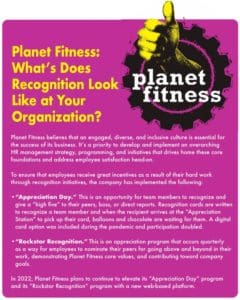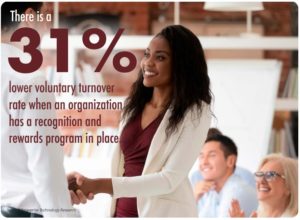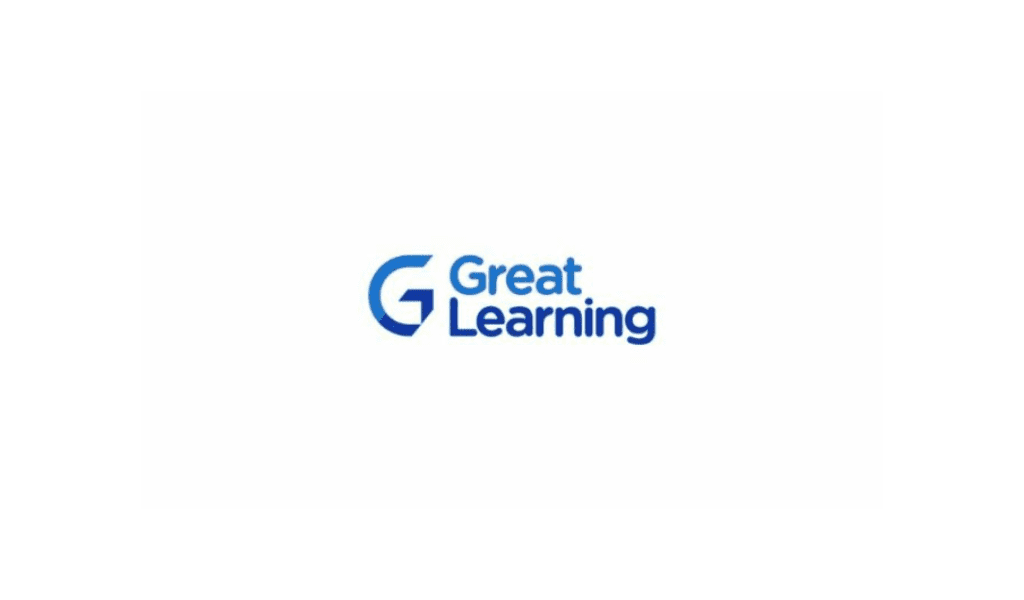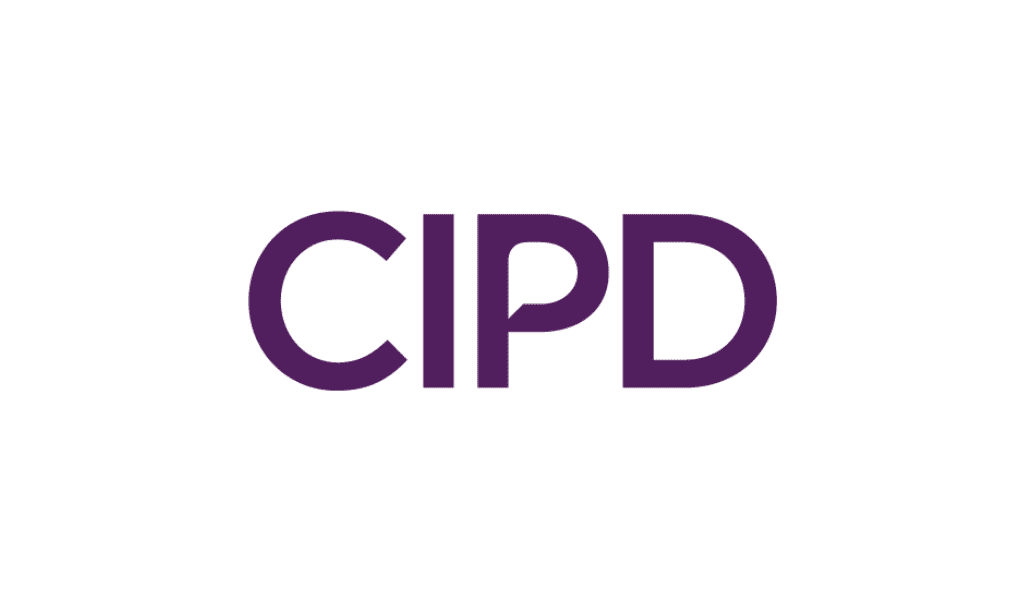To build a leadership pipeline, companies are rolling out recognition programs that praise employees and executives alike.
By Zee Johnson
Recognition is one of the most elemental, yet highly effective ways businesses can show their appreciation to hardworking employees. Acknowledgement of the contributions that are positively pushing a company’s initiatives, culture, and bottom line has proven to reinforce productivity, trust, and overall workplace happiness. In fact, a survey conducted by Bersin by Deloitte found that there is a 31% lower voluntary turnover rate when an organization has a recognition and rewards program in place. Further, employees who hear thank you from their employers at least five times are 22% less likely to leave the organization.
“It’s more important now than ever that each employee feels supported, appreciated and seen,” says Kathy Gentilozzi, chief people officer at Planet Fitness. “We believe that our recognition program for managers and peers has increased our employee satisfaction in this regard and has helped to strengthen our overall company culture.”
There are many methods for recognizing an employee, from the formal (like intricate performance tracking databases) to the informal (including gift cards and kind words), but the companies who are proactive and strategic will have the greatest outcome when developing leaders. And finding the next generation of leaders isn’t always easy, especially when employees may fall through the cracks of a fast-moving, robust workplace. One way to identify and develop those often overlooked high potentials is to establish and closely monitor a productivity tracker with a recognition program. Chris French, executive vice president of customer strategy at Workhuman, believes this data is critical for choosing and growing the next in line. “When you look at the data and see who your potential future leaders are, you can identify them. Then, you can put a spotlight on those people and reinforce the things they’re doing that are good. I think recognition can be a critical helping point for your leadership development program,” he says.
Judd Weisgal, senior vice president of sales at Madison Performance Group, believes there are many ways a company can call out employees for good work and says the employees themselves play a role as well. “A comprehensive recognition and rewards program encompasses in-person, social, and incentive recognition tools, as well as programs for reward redemptions and collaboration,” he says. “A good indication of the success of a recognition program is through direct feedback from team members, which includes surveys, internal focus groups, and using reports and analytics that demonstrate what aspects of the program are being used.”
Planet Fitness is one such company that leans on peer feedback to identify who its rising stars are. “[We have] an appreciation program that occurs quarterly as a way for employees to nominate their peers for going above and beyond in their work, demonstrating PF core values and contributing toward company goals,” Gentilozzi says. “Winners receive a special bonus, front row parking at Planet Fitness headquarters for the entire quarter, branded Planet Fitness apparel, credit toward the PF Café, and their name and photo added to the ‘Rockstar Wall of Fame.'”
Recognition acts as a workforce energizer. Dr. Natalie Baumgartner, chief workforce scientist for Achievers, of title. “Every employee needs recognition in the same way,” she says. “We’re all just humans doing jobs.”
Jeff Gelinas, president of recognition and engagement at Engage2Excel, agrees that leaders should receive the same acknowledgment as anyone else. “While pay and rewards may look different for a member of the C-Suite versus other managers and leaders within the organization, we all have a fundamental human need for appreciation and recognition.”
Plus, there are added benefits. “When leaders are recognized, there’s a twofold effect,” explains Dr. Baumgartner. “We see a trickle-down effect to the people beneath them. It’s critically important that we are recognizing our leaders starting at the very top because the effect will then multiply throughout the organization.”
French agrees that the way executives leverage and communicate their recognition can help build the foundation around the program. “It’s more about what they do with recognition because their job is to essentially execute at scale and develop other leaders,” he says.
French recommends looking at recognition data to determine if they are doing this. HR leaders can look at data points around engagement and retention within departments to see if executives are developing leaders who in turn are having success within their teams.
Businesses are increasing their recognition efforts and finding new ways to inspire and mold the next group of leaders. “A recognition program has elements in place to empower employees at every level of the company. True leaders will utilize whatever tool is at their disposal to uplift, engage, and encourage team members to perform at optimal levels,” Weisgal says. “As corporate cultures evolve, leaders must create true connections in order to effectively lead.”
Gelinas thinks taking a chance on a bright, driven employee can make a world of difference in development, and credits this approach to his own professional growth. “As I look back at my career, the biggest forms of recognition have been when my managers took chances on me and paved the way to stretch my thinking,” he says. “For example, after I received my MBA, a leader within my company at the time tapped my shoulder for a product strategy role, which was a big shift away from my roles in human resources leadership.”
approach to his own professional growth. “As I look back at my career, the biggest forms of recognition have been when my managers took chances on me and paved the way to stretch my thinking,” he says. “For example, after I received my MBA, a leader within my company at the time tapped my shoulder for a product strategy role, which was a big shift away from my roles in human resources leadership.”
It’s moments like these that often make the biggest difference for high potentials. “As I think back to the most powerful recognition moments throughout my career experience, it was that interaction between my manager or a senior leader that made those moments memorable. Those moments gave me confidence, made me more motivated, and in turn made me a better leader because I want to create those types of special moments for my staff.”
Yet still, companies cannot deny the power and accuracy of data when it comes to how and if they recognize an employee. Weisgal recommends looking at real-time feedback and performance measurement tools to help with team member growth. This keeps future leaders on track and ensures that regular check-ins, measurables, and goal discussions aren’t an afterthought.
No matter the route a company takes to make employees feel heard, appreciated, and supported, they must ensure that everyone has equal opportunity to benefit from it. To be fair and equitable, companies should look deeply at their staff and structure to address any unconscious biases before rolling out a recognition program.
French shares an example of a major financial institution Workhuman was working with that wanted to understand why female executives at the VP level were hitting a ceiling. “We worked with them collaboratively to look at all their recognition data and we could clearly see that there were high performing people who were getting no recognition,” he says. “They were isolated. No recognition from their boss, or from their peers. That allows us to really dig deep into inequities.”
Today’s talent and expectations are different. To stay ahead, companies must curate innovative recognition programs that show employees and potential hires that the future is brighter and more rewarding with their organizations.















